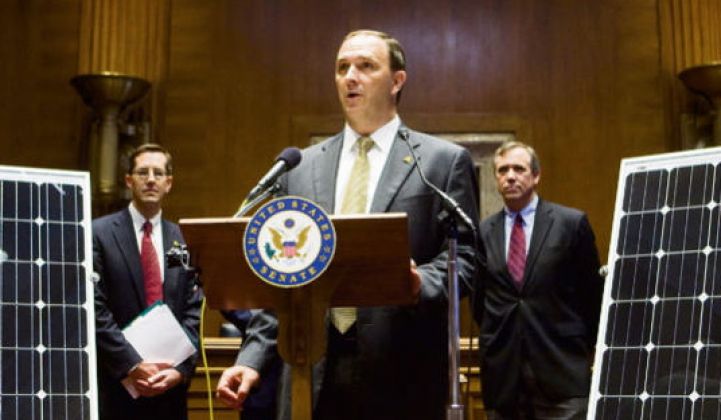SolarWorld America is going through another major restructuring.
SolarWorld, a German firm faced with mounting competitive pressure, has undergone layoffs and a financial restructuring, and continues to lose money with $108.6 million in losses on sales of $268 million in the first half of this year, compared to $453 million in sales in the first half of 2012.
SolarWorld is the "American" solar manufacturer which led the Coalition for American Solar Manufacturing (CASM), a consortium that brought an epic trade case to the U.S. Department of Commerce in 2011 and succeeded in placing an approximate 30 percent tariff (including antidumping and countervailing duties) on PV modules with Chinese-made solar cells. The trade case helped launch trade battles in other global regions and other parts of the solar value chain. We covered the 2012 ruling by the Department of Commerce as we followed every twist of the international legal case.
Recently, Wisconsin's Helios Solar Works, another CASM member, "temporarily suspended operations" at its 50-megawatt-capacity c-Si solar panel factory in Menomonee Valley and filed for receivership.
SolarWorld was able to win its fight to have tariffs imposed on Chinese solar panels -- but relief from unfair Chinese trade practices may not come soon enough for the German firm. SolarWorld, once one of Germany's largest solar companies, now has long-term debt of close to $1 billion in a savagely competitive solar market. SolarWorld has few differentiators to set it apart in a commodity market, other than the fact that its products are built in the U.S.
In a letter obtained from inside sources and verified as genuine by the firm, CEO Frank Asbeck yesterday told SolarWorld employees that:
- Production and Sales will be combined into a single operational business unit and location.
- Mukesh Dulani will lead the new organization.
- Gordon Brinser, former President of SolarWorld Industries and a prominent voice in the panel tariff campaign, has been "invited" to assume an "ongoing [role]" with the company.
In an article from earlier this year, we asked what happens to the tariff if the U.S. industry it is meant to protect no longer exists.




